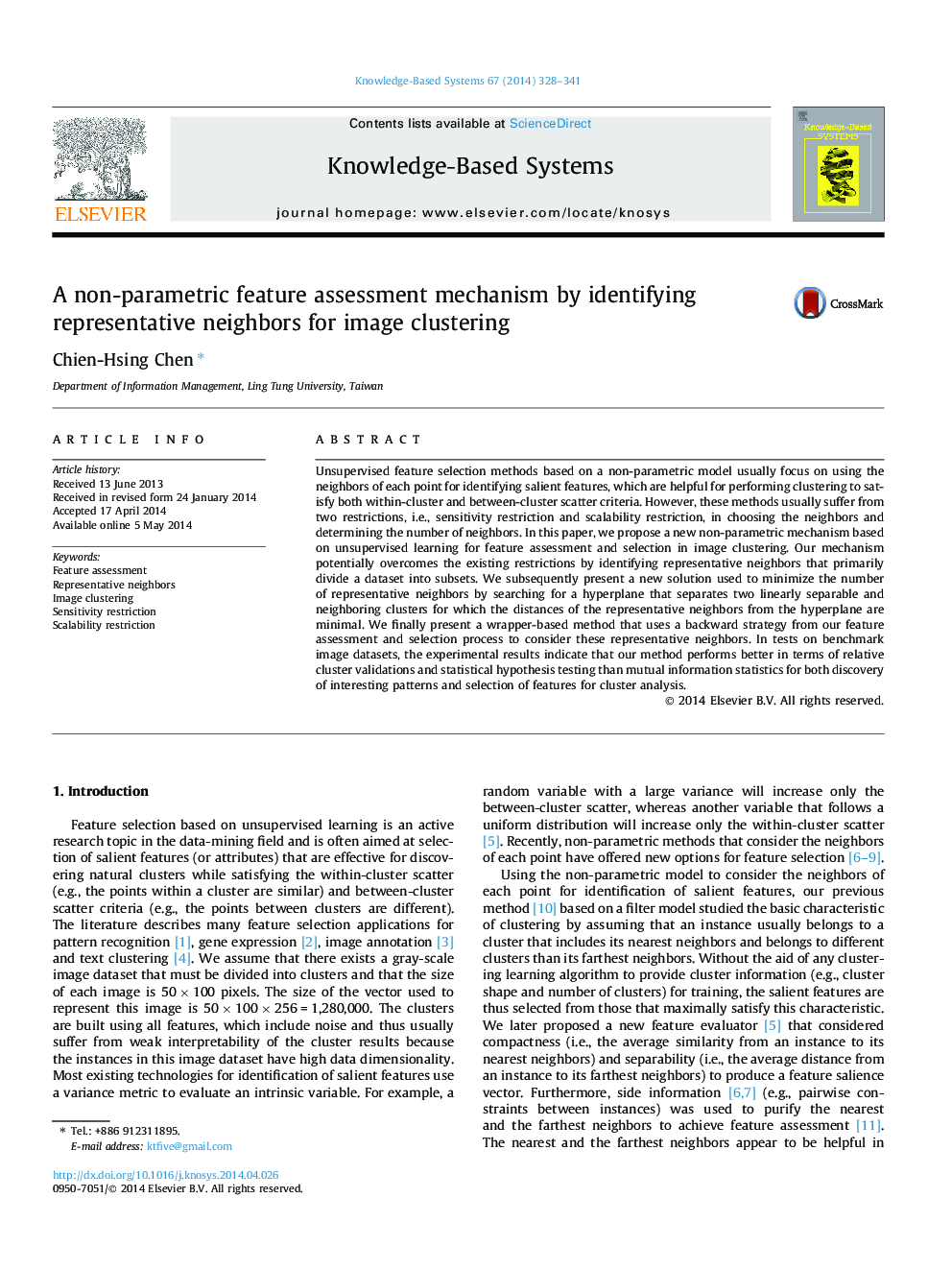| Article ID | Journal | Published Year | Pages | File Type |
|---|---|---|---|---|
| 405099 | Knowledge-Based Systems | 2014 | 14 Pages |
Unsupervised feature selection methods based on a non-parametric model usually focus on using the neighbors of each point for identifying salient features, which are helpful for performing clustering to satisfy both within-cluster and between-cluster scatter criteria. However, these methods usually suffer from two restrictions, i.e., sensitivity restriction and scalability restriction, in choosing the neighbors and determining the number of neighbors. In this paper, we propose a new non-parametric mechanism based on unsupervised learning for feature assessment and selection in image clustering. Our mechanism potentially overcomes the existing restrictions by identifying representative neighbors that primarily divide a dataset into subsets. We subsequently present a new solution used to minimize the number of representative neighbors by searching for a hyperplane that separates two linearly separable and neighboring clusters for which the distances of the representative neighbors from the hyperplane are minimal. We finally present a wrapper-based method that uses a backward strategy from our feature assessment and selection process to consider these representative neighbors. In tests on benchmark image datasets, the experimental results indicate that our method performs better in terms of relative cluster validations and statistical hypothesis testing than mutual information statistics for both discovery of interesting patterns and selection of features for cluster analysis.
